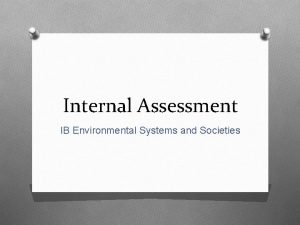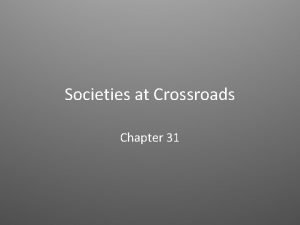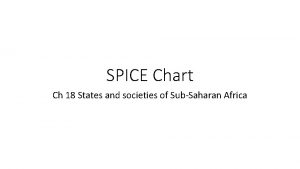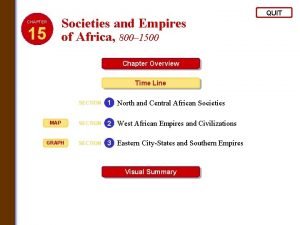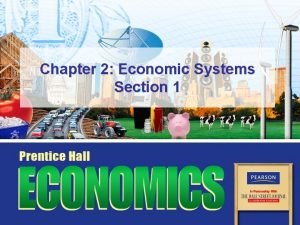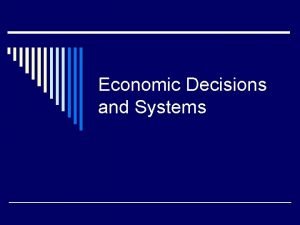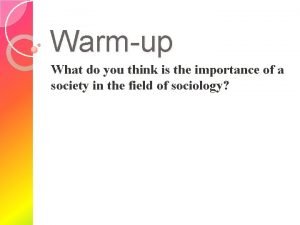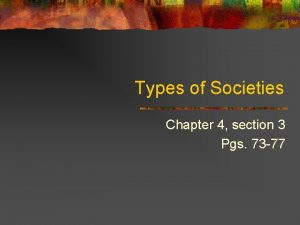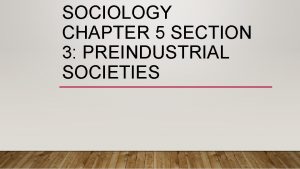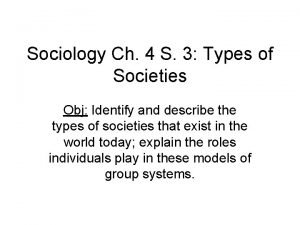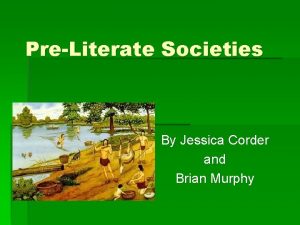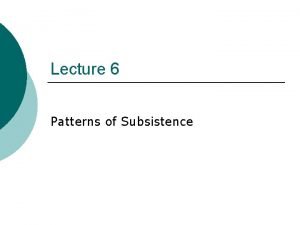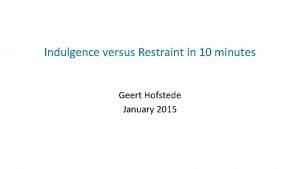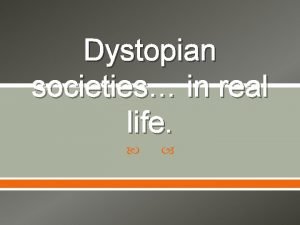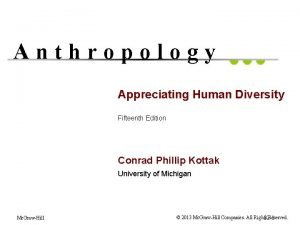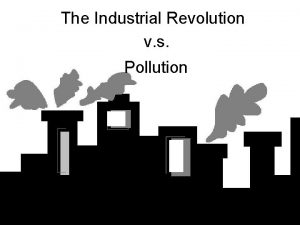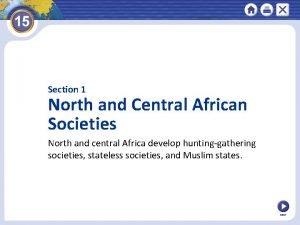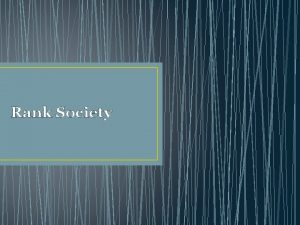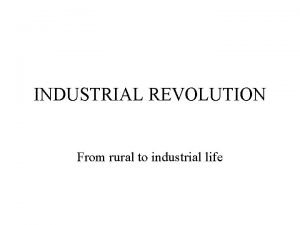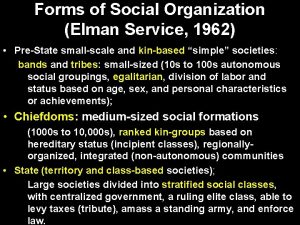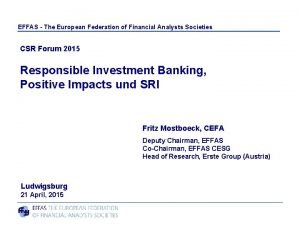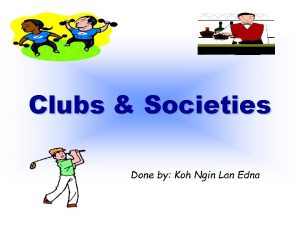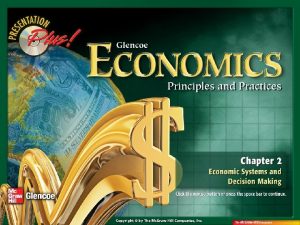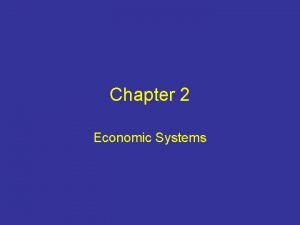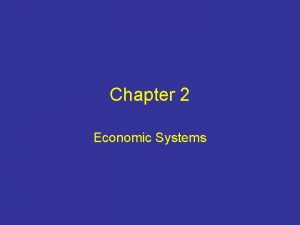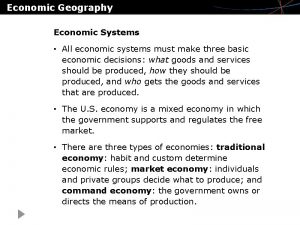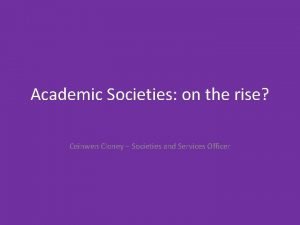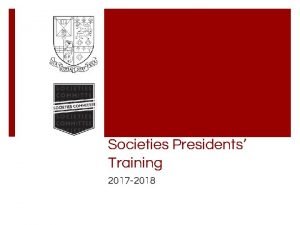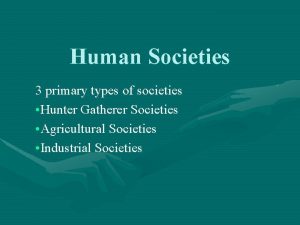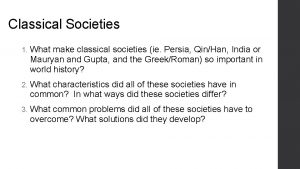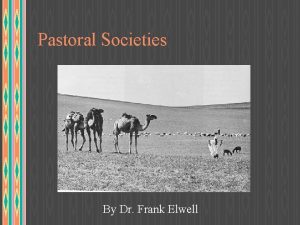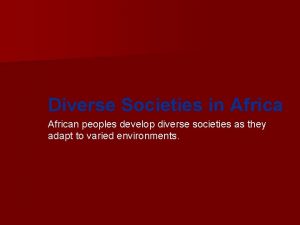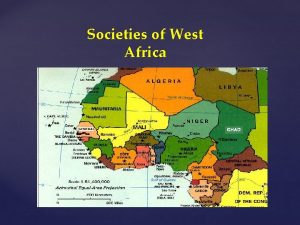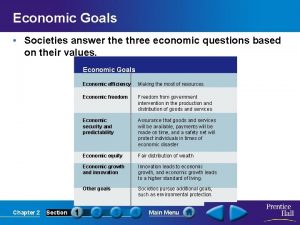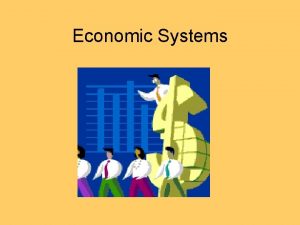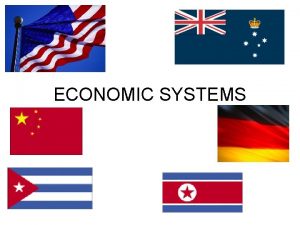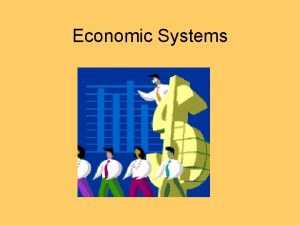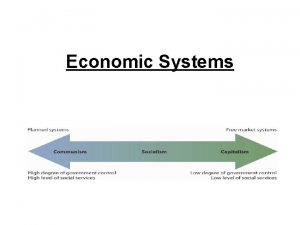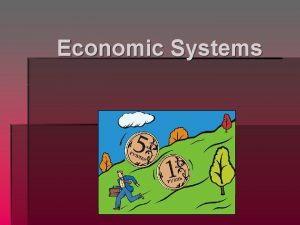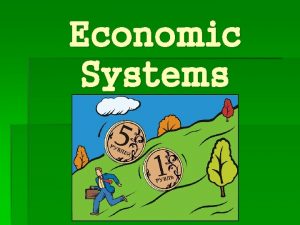Economic Systems Chapter 2 Economic Systems All societies



































- Slides: 35

Economic Systems Chapter 2

Economic Systems All societies have an economic system or a way of providing for the wants and needs of their people. � An Economic Systems function is to produce and distribute goods and services to consumers �

Economic System An economy must answer 3 economic questions: What should be produced? How should it be produced? Who will consume these goods and service?

Economic Systems � How a society answers these questions depends on how much it values economic goals of efficiency, freedom, security, equity and growth.

3 Key Economic Questions What goods or services should be produced? -How much resources should be devoted to national defense? Education? Health care? 1)

3 Key Economic Questions 2) How should it be produced? � -Should we have coal, oil, or nuclear power? Should teacher have 20 kids or 50 kids in a room?

3 KEY ECONOMIC QUESTIONS Who consumes the goods and services? - How will society distribute income? Who will buy the household products? Who will clean your house? 3)

Types of Economies � Traditional economy: Relies on habit or custom. Little innovation. Similar to family system. Boys follow dad’s footsteps, girls follow mom. Examples: Hunting, farming. Low standard of living.

Types of economies Market economy: Decisions made by individuals based on exchange, trade. (aka free markets, capitalism)

Types of Economies Centrally planned economy: (aka command economy) Government decides everything. Example: communism.

Types of Economies � Mixed economy: Market-based economy where government plays a limited role. This is the United States.

Traditional Economy � Allocation of scarce resources, and nearly all other economic activity, stems from ritual, habit or custom. � Individuals are not free to make own decisions. � Advantage: everyone knows the role they play � Disadvantage: discourages new ideas

Market Economy � People and firms make decisions based on what best suits their interest. Ex. USA, Canada and Great Britain � Advantage: overtime it can make changes in demand. Ex. Fast food to health food � Disadvantage: does not always provide for basic needs of people. Ex. Homeless people

Circular Flow

Command Economy A central authority (government) makes most of the decisions. � People have little if any influence over production. Ex. North Korea, Cuba and former Soviet Union. � Advantage: can change direction drastically in a short time. Ex. farming to industrial � Disadvantage: Not designed to meet the wants of consumers (Everyone gets only 1 In and Out burger. �

Chapter 2 Section 2

The Free Market � Market: An arrangement that allows buyers and sellers to exchange things. � Markets exist because it allows people to buy what they need to consume and sell goods and services they produce.

The Free Market � Specialization: The concentration of the productive efforts of individuals and firms on a limited number of activities. � Example: a mechanic specialized in fixing Japanese cars or and assembly line

The Free Market � Household: A person or group of people living in the same residence. � Firm: Business; an organization that uses resources to produce a product � Factor market: Market in which firms purchase the factors of production (land, labor, capital) from households

The Free Market Profit: The financial gain made in a transaction Product market: The market in which households purchase the goods and services that firms produce.

The Free Market � Free market is an economic system where people do what’s best for them for personal gain. � Consumers have an interest in looking for lower prices � Producers engage in a competition for consumer’s money.

Adam Smith (1723 -1790) Wrote The Wealth of Nations in 1776 � Known as the Father of Economics � Said people are selfish, but that’s ok because it works � Called the relationship between self interest and competition the invisible hand � Said government should stay out of the economy (laissez faire means ‘hands off’) � Government should only be involved with education, health care and transportation. �

Adam Smith Assignment � In your notebooks, you will create a graphic organizer on the left side of the Adam Smith article you are about to read

Circular Flow

The Free Market Self-interest is the motivating force behind the free-market. People produce goods and services for their own personal gain. � Competition is the struggle among producers for the dollars of consumers. This helps control firm’s selfishness. � Competition act’s as a regulating force in the marketplace. Without competition a business can monopolize a product or service �

The Invisible Hand (self interest and competition) � rewards efficient producers and buyers � results in: � goods society wants � quantity society wants � prices society is willing and able to pay � normal profits

The Free Market � The Free Market Economy, however, does need some Government intervention to provide for things that the market place does not address. � Example: national defense, roads and highways, education, and health care � Incentive: The hope of reward or the fear of punishment that encourages people to act in a certain way.

The Free Market � Why is the free market system good? � 1) It works. Producers make what consumers want, when they want it. Prices are pretty good. � 2) Freedom. Work where you want, buy what you want, make what you want.

The Free Market � 3) Growth is encouraged because innovation is encouraged. � 4) A wide variety of things get made because consumers decide what gets made.

The Free Market � Consumer sovereignty is the power of consumers to decide what gets produced

Why the Market? Scarcity exists � Societies must find a way to allocate scarce goods and services � In any allocative mechanism, some people will be told “No. ” � The market system is efficient, but… � Neither markets nor other economic systems are “fair. ” �

Chapter 2 Section 3

Centrally Planned Economies In command economies, the government controls the factors of production and answers the 3 economic questions of what, how and for whom to produce for all of society. � Idea is that the government makes all the choices that will benefit or is best for the whole society, not just a few individuals � Command economies often associated with socialism, communism and authoritarianism. �

Centrally Planned Economies � Socialism is the belief that democratic means should be used to distribute wealth evenly through a society � Communism is the belief that government leaders should distribute wealth evenly through a society. � Authoritarianism (Fascism)- requiring strict obedience to an authority, such as a dictator. No individual freedoms.

Centrally Planned Economies Problems � Poor Quality of Goods= workers don’t care, as long as they produce what they are told to produce � Shortages of Goods and Services= need products are not made � Diminishing Production = workers don’t care, they don’t get raises for producing more; no incentives � Performance always falls short of ideals that the system is built � Can’t meet the needs of consumers needs and wants: Government decides what is produced, not consumers � The system does not reward innovation, is not flexible, and sacrifices individual freedoms for the “good” of whole society
 Internal assessment
Internal assessment Chapter 1 lesson 2 our economic choices worksheet answers
Chapter 1 lesson 2 our economic choices worksheet answers Name three lines
Name three lines Chapter 31 societies at crossroads
Chapter 31 societies at crossroads Mali spice chart
Mali spice chart Chapter 15 societies and empires of africa
Chapter 15 societies and empires of africa Chapter 2 economic systems and decision making answer key
Chapter 2 economic systems and decision making answer key Chapter 2 economic systems answer key
Chapter 2 economic systems answer key Chapter 2 economic systems and decision making
Chapter 2 economic systems and decision making Chapter 2 economic systems and decision making
Chapter 2 economic systems and decision making Chapter 1 economic decisions and systems answer key
Chapter 1 economic decisions and systems answer key Chapter 2: economic systems worksheet answer key
Chapter 2: economic systems worksheet answer key History helps us understand people and societies
History helps us understand people and societies Characteristics of pastoral societies
Characteristics of pastoral societies Kinds of society
Kinds of society Subsists primarily by raising animals
Subsists primarily by raising animals Pastoral society characteristics
Pastoral society characteristics Preliterate societies examples
Preliterate societies examples Simple horticultural societies
Simple horticultural societies Restrained societies examples
Restrained societies examples Real life dystopias
Real life dystopias Diverse societies in africa
Diverse societies in africa Types of society
Types of society In nonindustrial societies, artists
In nonindustrial societies, artists What is pre-industrial societies
What is pre-industrial societies North and central african societies
North and central african societies Rank societies
Rank societies New england federation of humane societies
New england federation of humane societies Domestic system
Domestic system Elman service classification of societies
Elman service classification of societies Federation of european neuroscience societies
Federation of european neuroscience societies Effas
Effas Balance sheet for clubs and societies
Balance sheet for clubs and societies Secret societies in the bible
Secret societies in the bible Credit unions and building societies
Credit unions and building societies Pontifical mission societies philadelphia
Pontifical mission societies philadelphia
